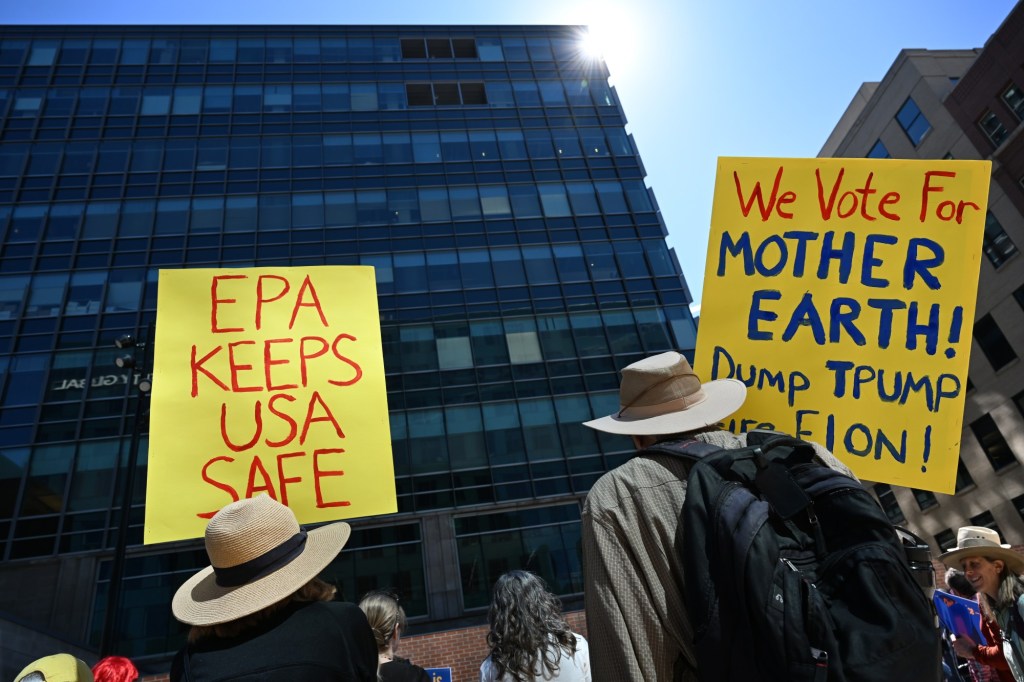“The largest deregulatory action in the history of the United States” was proposed last week. This boastful comment came from U.S. Environmental Protection Agency Administrator Lee Zeldin, as he announced plans to quash a key 2009 ruling that reins in planet-warming burning of fossil fuels. Under threat now is a directive that has worked to reduce risk and protect public health in the U.S., called the “endangerment finding.”
This announcement triggered a 45-day public comment period, with a September 15 deadline. Here is where you can submit your comments.
For regular readers of this sustainability and environment column, you may recall my May 31 alert. At that time, I described draft documents leaked to the press that argued that fossil fuel burning “does not contribute significantly to dangerous pollution,” as I warned that a proposal was on the horizon. The EPA proposal is wider ranging than I anticipated, seeking to remove restraints on stationary source greenhouse gas (GHG) power plant emissions as well as non-point source polluters such as cars and trucks.
While EPA arguments seize on the ubiquity of carbon dioxide in our world and question the efficacy of the endangerment finding anyway, do not be fooled. This effort to repeal and repel the realities of 21st-century climate change may again signal nostalgic regression to yesteryear. Yet, it has been clear for many years that carbon dioxide, methane and other GHGs from fossil fuel-burning activities drive human-caused climate change and endanger public health.
Back in the 1950s and 1960s, the U.S. was making scientific and policy progress on climate change. In 1957, U.S. President Dwight Eisenhower established the President’s Scientific Advisory Committee (PSAC) to advise on policy-relevant scientific issues. It also was the International Geophysical Year that marked international scientific partnerships and cooperative efforts to study transboundary environmental problems like climate change. In 1965, a PSAC Environmental Pollution Panel was convened by U.S. President Lyndon Johnson. Their final report noted, “pollutants have altered on a global scale the carbon dioxide content of the air and the lead concentrations in ocean waters and human populations.” They wrote that atmospheric carbon dioxide “will modify the heat balance of the atmosphere to such an extent that marked changes in climate.”
They concluded: “The combustion of coal, oil, and gas in our homes, vehicles, and factories results in the discharge into the air of sulfur dioxide, carbon dioxide, carbon monoxide, oxides of nitrogen, and partially burned hydrocarbons. Some of these gases, together with gasoline and natural gas vapors, undergo chemical change in air and in sunlight, and become the noxious constituents of smog; others, like carbon dioxide, are accumulating in such large quantities that they may eventually produce marked climatic change.”
The panel recommended investments to alleviate negative impacts of local air pollutants and GHG emissions.
This time also marked the establishment of the U.S. National Center for Atmospheric Research in 1960. NCAR — based here in Boulder — was designed by the National Science Foundation (NSF) to serve as a hub for modeling, improving and coordinating atmospheric research, including “the CO2 question.” In 1959 — in creating NCAR — NSF remarked that human “activities in consuming fossil fuels during the past hundred years … have been on a sufficient scale to make it worthwhile to examine the effects these activities have had upon the atmosphere.”
While scientists have been examining links between CO2 and climate change for over a century, in 1969, U.S. Congress held a hearing that led to the passage of the Clean Air Act in 1970. CAA provided guidance for the newly established EPA to set emissions limits and standards on air pollution, including GHGs. A legal test of CAA culminated in a 2007 Supreme Court ruling that the EPA did have authority and responsibility to regulate GHG emissions because GHGs were determined to be air pollutants that endangered public health and welfare. That 2007 Supreme Court decision led to the 2009 finding that’s currently under threat.
It’s time to provide your perspectives on this proposal (by Sept. 15). Do not fall prey to mis- and disinformation suggesting that this is no big deal: This is a linchpin of the Trump administration’s larger plans to dismantle established science and policy progress.
This is a biweekly sustainability and environment column authored by Max Boykoff. Boykoff is a faculty member at the University of Colorado Boulder, though these the views expressed here are based upon his scholarly expertise and research/creative experience as well as personal views and should not be considered the university’s official position on any specific issue. Email: mboykoff@gmail.com.
